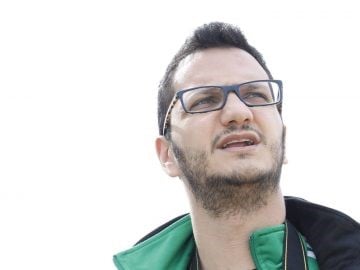Application of Remote Sensing in Cultural Heritage Research II
A special issue of Remote Sensing (ISSN 2072-4292). This special issue belongs to the section "Environmental Remote Sensing".
Deadline for manuscript submissions: closed (26 April 2024) | Viewed by 5096
Special Issue Editors
Interests: 3D digitisation; photogrammetry; AI; software engineering
Special Issues, Collections and Topics in MDPI journals
Interests: 3D digitisation; photogrammetry; real time computer graphics; software engineering
Special Issues, Collections and Topics in MDPI journals
Special Issue Information
Dear Colleagues,
In today’s world, remote sensing technologies play a crucial role in accurately documenting, restoring, monitoring, disseminating, and managing our cultural heritage. However, generating high-quality 3D assets from the CH domain remains a complex and challenging task that is heavily reliant on current research and technological advances across multiple scientific domains. These domains include remote sensing, artificial intelligence (AI), internet of things (IoT), geographic information systems (GIS), computer graphics, computer vision, and big data. Currently, significant basic and applied research efforts are focused on automating data collection procedures, data fusion, data handling, and management, all of which are advancing the current state of remote sensing applications in the CH domain.
The aim of this Special Issue is to explore various aspects of the multidisciplinary domains that employ remote sensing technologies to generate and interpret state-of-the-art 3D assets, providing solutions for a wide range of challenges related to cultural heritage. The objective is to gather research activities and case studies related to the following topics (among others):
- The use of multispectral and hyperspectral data for 3D documentation and content analysis;
- The integration of aerial and terrestrial multisensory data;
- Autonomous aerial data collection for the 3D documentation of CH sites using photogrammetric/LiDAR techniques;
- Multimodal monitoring and novelty detection of CH sites;
- The evaluation of commercial and experimental aerial/terrestrial data collection systems based on use-case scenarios;
- Specification of requirements and designs for large-scale 3D documentation projects;
- Monitoring of risks, restoration, and management of CH sites;
- Geospatial and climate analysis for the protection of CH sites;
- Content analysis of CH assets based on machine learning techniques;
- Methodologies for visualizing and disseminating big data;
- Review articles that cover one or more of the above topics are also welcome.
We extend an invitation and encourage experts who specialize in the aforementioned fields to submit their contributions.
Dr. George Alexis Ioannakis
Dr. Anestis Koutsoudis
Guest Editors
Manuscript Submission Information
Manuscripts should be submitted online at www.mdpi.com by registering and logging in to this website. Once you are registered, click here to go to the submission form. Manuscripts can be submitted until the deadline. All submissions that pass pre-check are peer-reviewed. Accepted papers will be published continuously in the journal (as soon as accepted) and will be listed together on the special issue website. Research articles, review articles as well as short communications are invited. For planned papers, a title and short abstract (about 100 words) can be sent to the Editorial Office for announcement on this website.
Submitted manuscripts should not have been published previously, nor be under consideration for publication elsewhere (except conference proceedings papers). All manuscripts are thoroughly refereed through a single-blind peer-review process. A guide for authors and other relevant information for submission of manuscripts is available on the Instructions for Authors page. Remote Sensing is an international peer-reviewed open access semimonthly journal published by MDPI.
Please visit the Instructions for Authors page before submitting a manuscript. The Article Processing Charge (APC) for publication in this open access journal is 2700 CHF (Swiss Francs). Submitted papers should be well formatted and use good English. Authors may use MDPI's English editing service prior to publication or during author revisions.
Keywords
- 3D digitisation
- remote sensing
- multispectral/hyperspectral data
- geospatial analysis
- machine learning
- photogrammetry
- lidar
- aerial/terrestrial data collection
- restoration/preservation






